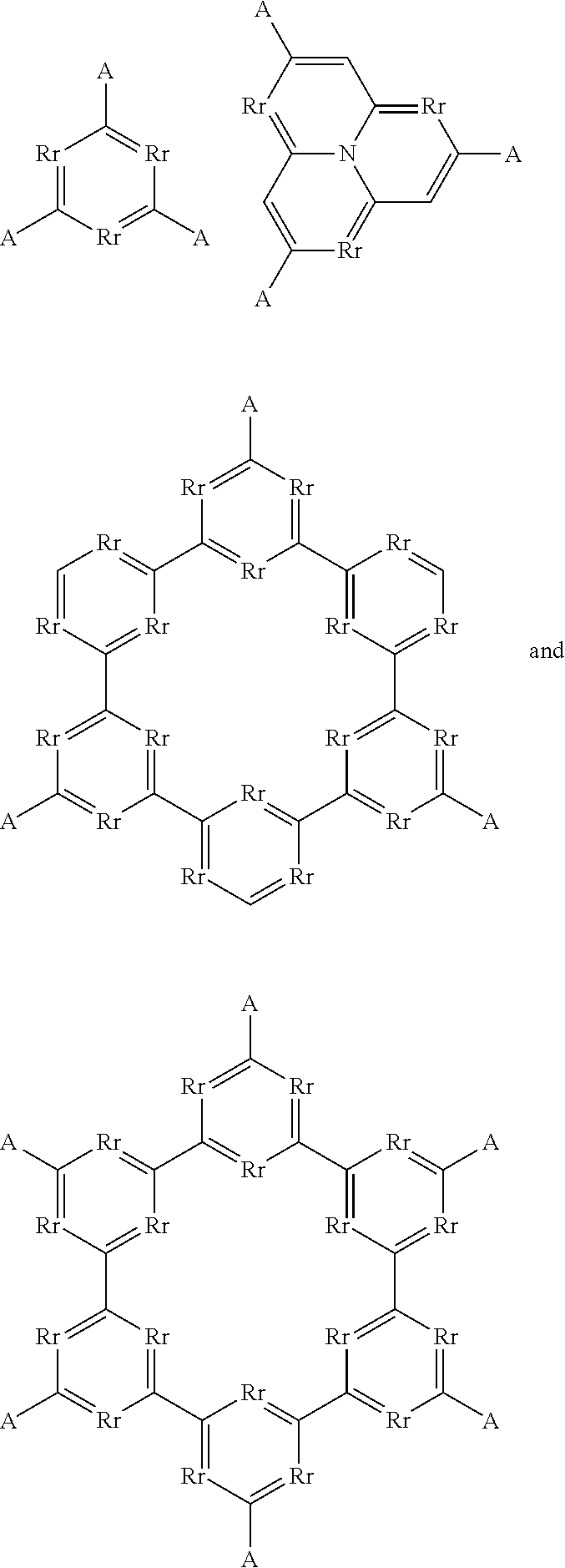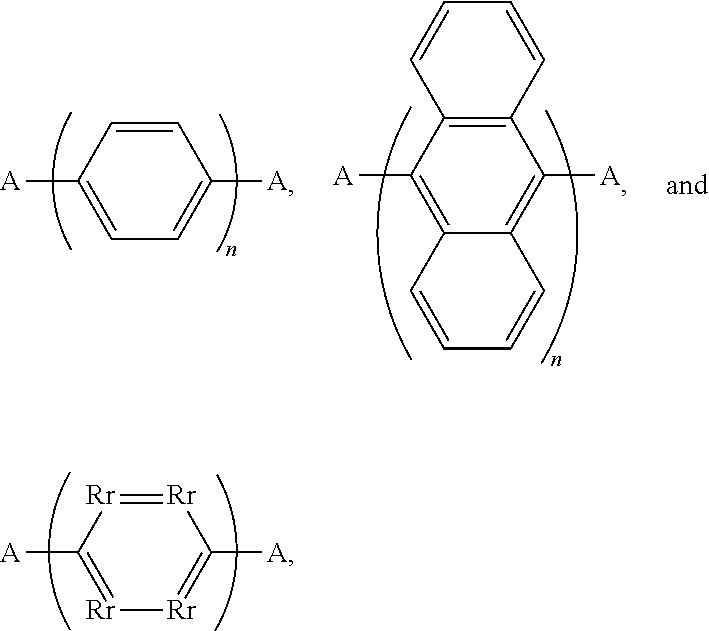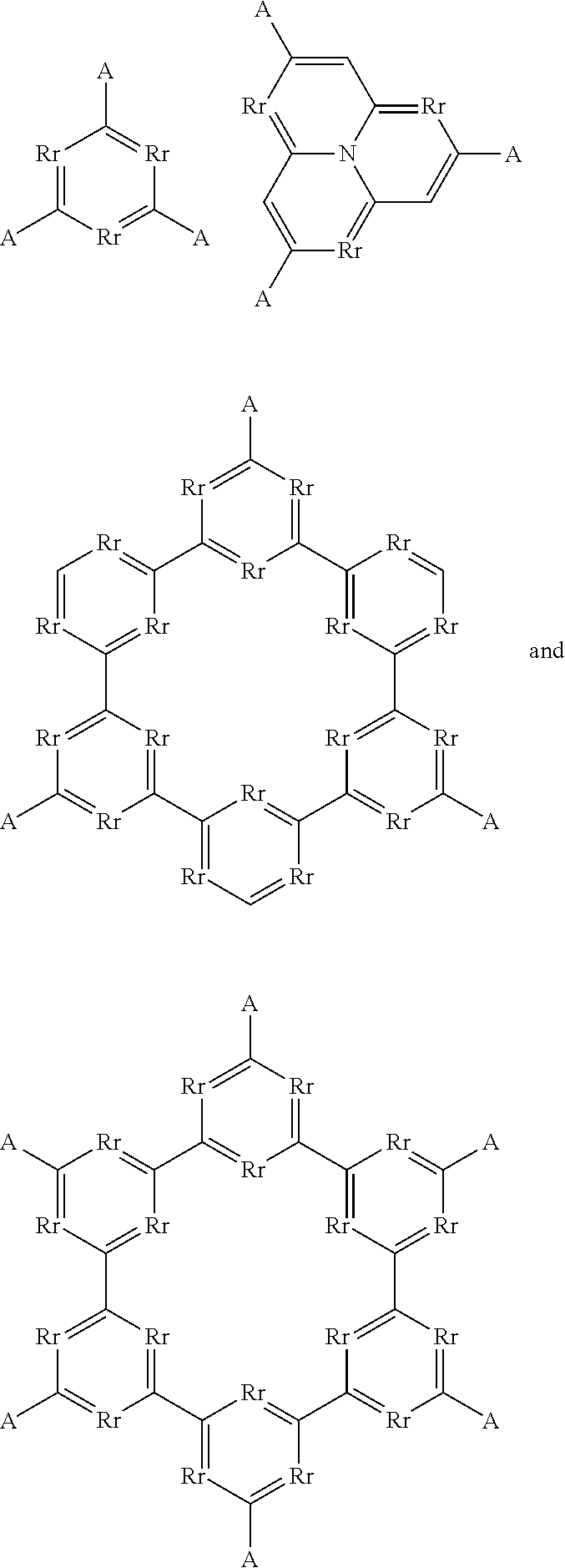Method for forming perforated graphene with uniform aperture size
- Summary
- Abstract
- Description
- Claims
- Application Information
AI Technical Summary
Benefits of technology
Problems solved by technology
Method used
Image
Examples
Embodiment Construction
[0016]Referring now to the drawings, and in particular to FIG. 1, a schematic representation of a methodology for forming perforated atomically thin materials, such as graphene, with uniform aperture or pore size is designated generally by the numeral 10. As seen in FIG. 1, a generally planar, multi-functional salt moiety designated generally by the numeral 12 is utilized. Such a moiety 12 is used as a reactant with either copper or silver in an Ullman-type synthesis based upon, for example, the following chemical equations:
2Cu+R—X→R—R+2CuX (1)
or
2Ag+R—X→R—R+2AgX, (2)
where R is the generally planar, multi-functional moiety (described below) and X is a halide such as Cl, Br, or I, or other functional leaving group, such as CF3SO3, or CF3CF2SO3, such that R—X is a salt.
[0017]In the present methodology, either of the above equations or similar equations utilizing Ullman-type synthesis can be employed. Indeed, such a synthesis or any similar type synthesis with a surface reaction gener...
PUM
| Property | Measurement | Unit |
|---|---|---|
| Diameter | aaaaa | aaaaa |
| Diameter | aaaaa | aaaaa |
| Diameter | aaaaa | aaaaa |
Abstract
Description
Claims
Application Information
 Login to View More
Login to View More - R&D
- Intellectual Property
- Life Sciences
- Materials
- Tech Scout
- Unparalleled Data Quality
- Higher Quality Content
- 60% Fewer Hallucinations
Browse by: Latest US Patents, China's latest patents, Technical Efficacy Thesaurus, Application Domain, Technology Topic, Popular Technical Reports.
© 2025 PatSnap. All rights reserved.Legal|Privacy policy|Modern Slavery Act Transparency Statement|Sitemap|About US| Contact US: help@patsnap.com



